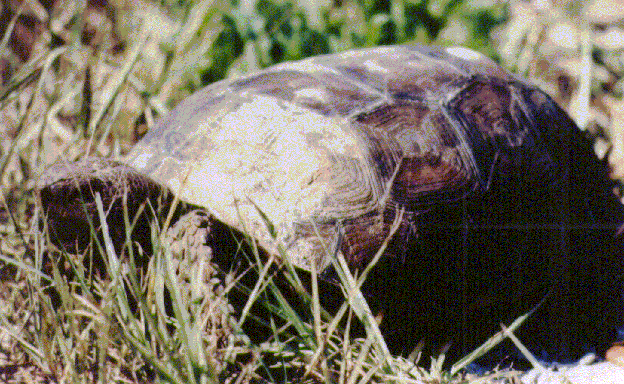Specialized Services
- Gopher Tortoise Removal
The gopher tortoise (Gopherus polyphemus) averages 9-11 inches long, but can attain lengths of 15 inches. They can weigh up to 15 pounds. It occurs throughout Florida but prefers sandy, well drained upland areas. It eats grasses, bean-family plants, fruits, and grass-like plants of the sunflower family. They excavate burrows averaging 15 feet in length, but some burrows can be up to 48 feet long and about six feet deep. Gopher tortoise burrows may be used by many other species, including the Florida mouse and indigo snake.

In Florida, the gopher tortoise is a species of special concern, and it is illegal to take, possess, transport, or sell gopher tortoises, or their eggs, except as authorized by the FWC. Permits from the FWC are required to relocate tortoises. Courtesy FWC
- Osprey Nest Relocation
The Osprey is a large, fish-eating raptor intermediate in size between the Bald Eagle and Red-tailed Hawk. It breeds in North America from Alaska and the Yukon east to Newfoundland and south to Baja California, the Gulf Coast, and the Caribbean.
Habitat. Ospreys are typically associated with permanent water habitats, especially sea coasts, impoundments, lakes, rivers, and swamps. Breeding habitat requirements include open expanses of water that support abundant slow-moving fish, water clarity sufficient to allow visual detection of fish, and elevated or inaccessible sites for nest-building (Beebe 1974). Ospreys consume fish almost exclusively, although crustaceans, frogs, turtles, birds, and rodents are occasionally taken (Brown and Amadon 1968, King 1972, Wiley and Lohrer 1973, Toland 1985).

Osprey nest sites are highly variable, but in Florida the birds prefer either dead trees or living trees with broken or dead tops. The nest tree is usually taller than surrounding trees and as close to suitable foraging areas as possible (Ogden 1978b, Palmer 1988, Johnsgard 1990). Where natural sites are limited or missing, Ospreys readily nest on human-made structures, such as power poles, radio towers, channel markers, television antennas, or bridges (Ogden 1978b). The nest is a large, bulky structure that is regularly reused and enlarged for several successive years (Brown and Amadon 1968; Ogden 1978b, Palmer 1988). Ospreys typically lay 3 eggs that are creamy-white, and heavily blotched and spotted with browns, grays, and rust (Harrison 1978; Palmer 1988). Incubation requires approximately 38 days, and the young fledge at 49 to 59 days of age (Palmer 1988; Johnsgard 1990).
Seasonal Occurrence. In Florida, the onset of nesting varies geographically; and Ospreys can be found nesting at any time of the year (Kale and Maehr 1990). In central Florida, Ospreys usually initiate breeding in February or March, and breeding continues through May or June (B. Toland, unpubl. data; B. Millsap, pers. commun.). In the Keys nesting may begin in November and December.
Status. The Osprey is a common and widespread breeding bird in
Florida. Ospreys nesting in peninsular Florida south of the 29th
parallel are unique among Ospreys of the eastern United States, because
they are nonmigratory residents. In Monroe County only, they are
considered a Species of Special Concern by the Florida Game and Fresh
Water Fish Commission [editor: now Florida Fish and Wildlife
Conservation Commission] (Wood 1991).
According to Ogden (1978b), the highest densities of nesting Ospreys in
Florida occur along both coasts and in the central lakes region, and
this is vividly shown on the Atlas map. Breeding pairs are quite
conspicuous because of their habit of perching on snags, power poles,
channel markers, or other sites with commanding views, and, as a result,
the Atlas map is probably a fairly accurate portrayal of their
distribution. During the breeding season, Ospreys draw attention to
themselves by frequently emitting a series of plaintive staccato
whistles. Their vocalizations accompany courtship displays that include
high circling, hover flying, and sky dancing (Palmer 1988).
Brian R. Toland
Sponsored by Margaret K. Rondeau
Florida Power Corporation